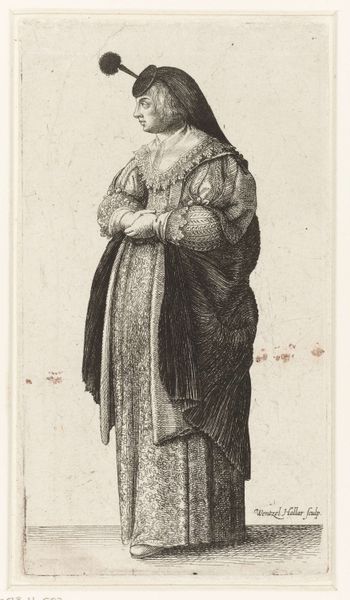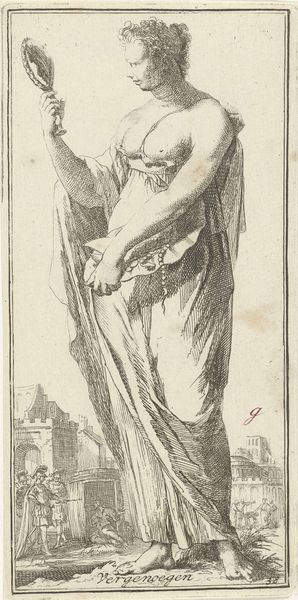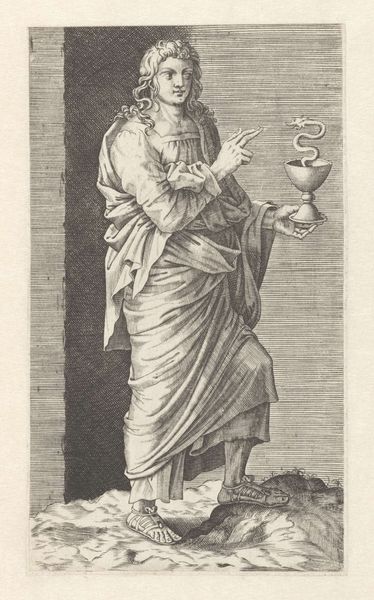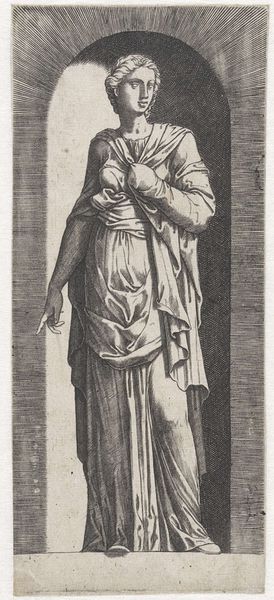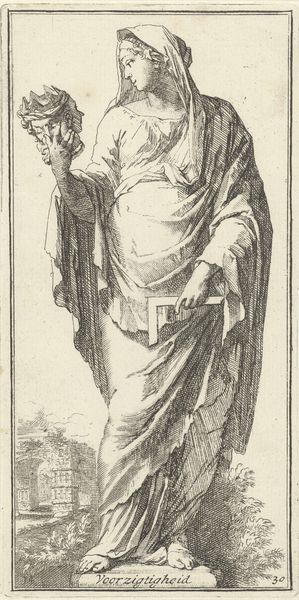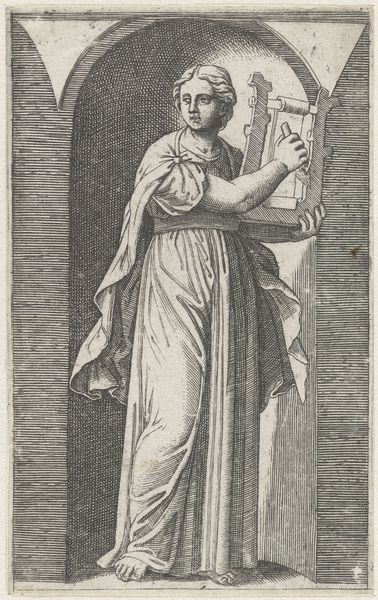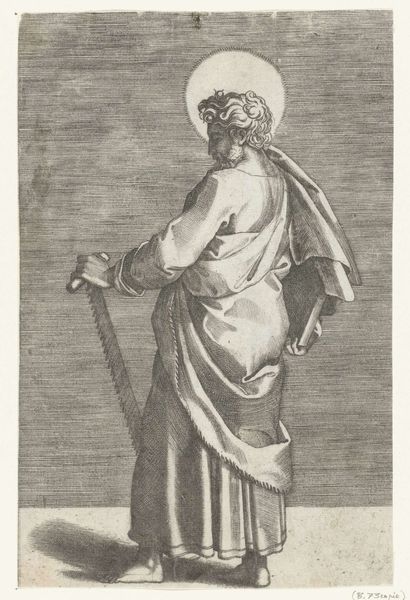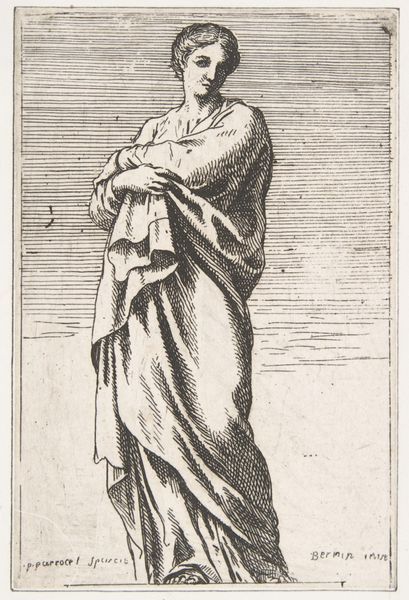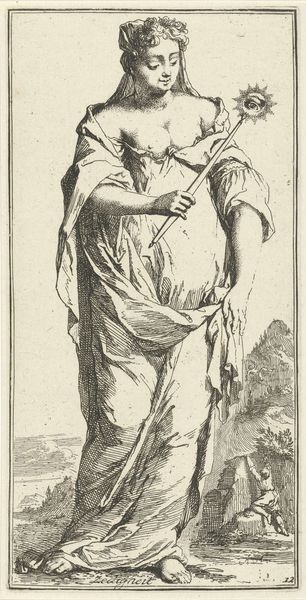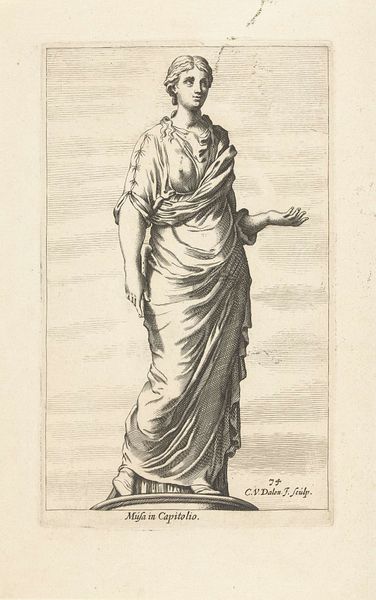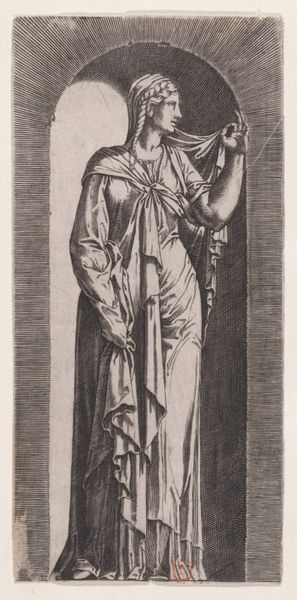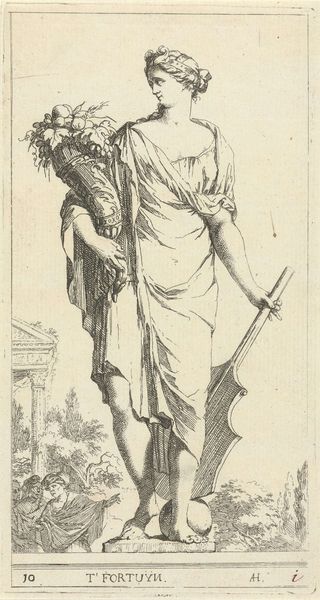
drawing, print, ink, engraving
#
portrait
#
drawing
#
allegory
#
baroque
# print
#
landscape
#
classical-realism
#
figuration
#
form
#
ink
#
line
#
islamic-art
#
history-painting
#
academic-art
#
nude
#
engraving
Dimensions: height 222 mm, width 106 mm
Copyright: Rijks Museum: Open Domain
Curator: It’s striking how serene the woman appears, despite the ritualistic nature of the image. There’s almost a contemplative mood about Jan de Bisschop's “Beeld van een vrouw die wierook brandt.” Editor: Jan de Bisschop created this work after 1663, it is currently held at the Rijksmuseum. The print, executed in ink through engraving, depicts a standing woman, draped in classical robes, her hand extended toward a burning candle. Curator: Indeed. The flame, barely touching her fingertips, becomes a powerful symbol here, almost transcendent. The veil she wears might suggest mourning, piety or secrecy. It certainly frames the woman’s face, which emphasizes her downcast gaze. Editor: That downcast gaze is key, I think, to understanding the artwork's position within the socio-cultural sphere. Prints like these circulated widely in the 17th century. Think of how they served not only as devotional aids but as political statements. By referencing classical antiquity, the artist is trying to imbue his imagery with legitimacy and historical weight. Curator: I see your point about its public role; yet there’s something profoundly personal at play. The flame draws the eye and invites contemplation. Fire is transformative. It’s not only about burning incense. But the purification, inspiration and maybe even destruction in her psyche, which ties the drawing back to ancient and enduring human longings. Editor: That tension, between public meaning and personal resonance, is precisely what makes this image so compelling. We see the artist strategically playing with visual conventions and social expectation. Curator: Right, there’s that interplay between symbolism and lived experiences. Seeing that image helps me connect emotionally to something distant. It makes me ask questions about belief and inner states. Editor: For me, it provokes questions about how this imagery served broader cultural and political purposes. Curator: Well, seeing both aspects enriches our understanding of not just the work, but also our own role in shaping its continuing narrative.
Comments
No comments
Be the first to comment and join the conversation on the ultimate creative platform.
